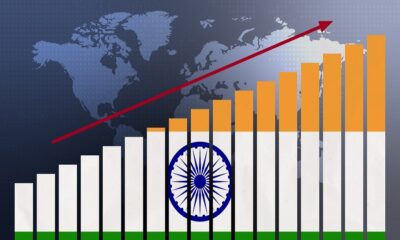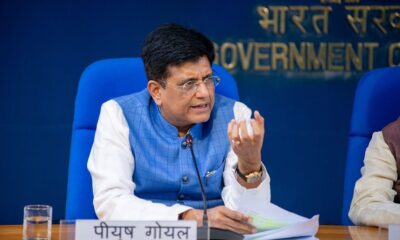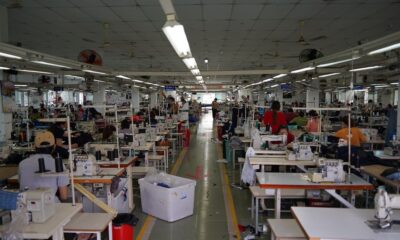Fashion
US researchers replace harmful chemicals with eco-friendly cottonseed
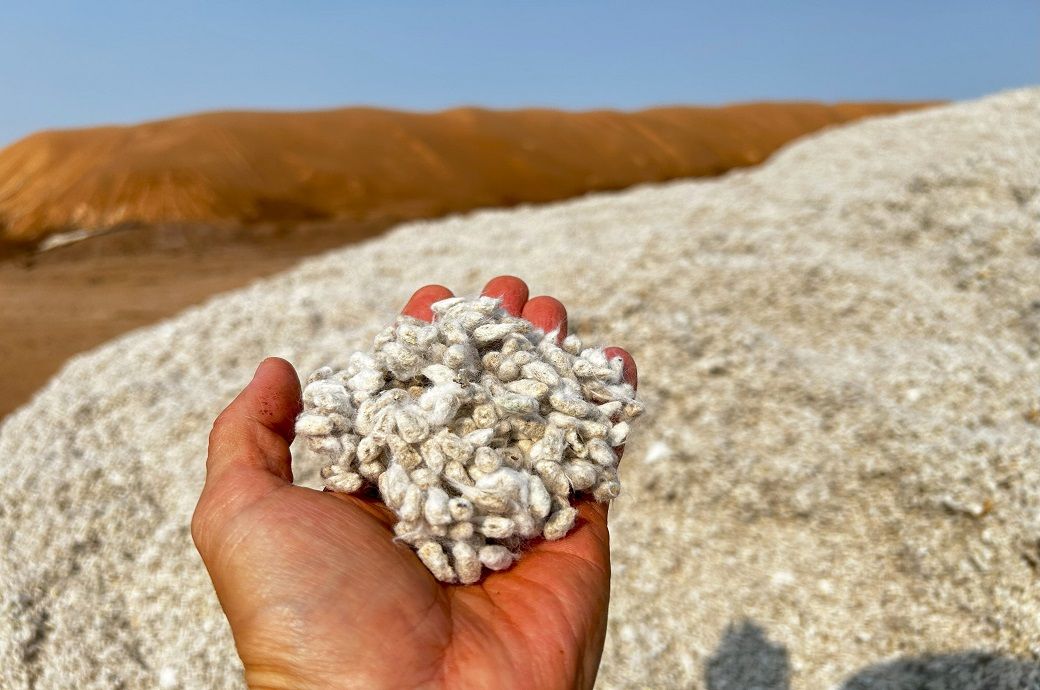
The process for harvesting cotton and creating fabric for textiles includes collecting the wispy cellulose fibres of the cotton boll, removing the cotton seeds interspersed in the fibres, spinning the cotton into yarn, weaving the yarn into fabric and then finishing the fabric with a variety of chemicals that alter its physical properties — for example, making it softer or wrinkle resistant.
Researchers at North Carolina State University have developed a sustainable method using cottonseed oil to finish cotton fabrics—offering a safer alternative to harmful chemicals like formaldehyde and PFAS.
These methods aim to make fabrics smooth and durable without compromising environmental or human health.
Graduate student Taylor Kanipe presented the findings at the ACS Fall 2025 meeting.
Formaldehyde-based resins have traditionally been used as a fabric finishing agent. The sticky resin easily binds to cotton’s cellulose fibres, forming chemical bridges to make the long cellulose fibres resistant to wrinkling or stretching. While formaldehyde is cheap, easy to use and highly reactive, at high concentrations it is considered a Class 1 carcinogen. Formaldehyde can also cause skin and respiratory irritation.?Fluorine-
To eliminate the need for formaldehyde-based resins and PFAS in cotton fabric finishing, a group led by Richard Venditti, a professor of forest biomaterials, paper science and engineering at NC State, set out to create a green alternative by chemically altering seed oil from the cotton plant itself. Drawing on previous research at NC State, Kanipe, Venditti and colleagues took advantage of specific chemical properties in cottonseed oil to insert epoxy groups along the long carbon chains that make up the oil molecules. The epoxide group allows epoxidised cottonseed oil (ECSO) molecules to create strong chemical bonds with the cellulose fibres in cotton fabric and with each other, forming a polymer and making the fabric hydrophobic. The epoxy groups also create oil molecule bridges between the cellulose fibres, making the fabric resistant to wrinkling.
In addition to fabric finishing, ECSO could provide a use for the cottonseed oil harvested along with the cotton fibers, making it as inexpensive, easy to use and effective as formaldehyde resins.
“Epoxidised vegetable oils have a range of applications,” Kanipe explains. “While native cottonseed oil lacks the reactivity of formaldehyde-based resins, this simple epoxidation process produces a safer, more user-friendly alternative for applications like durable press finishes.”
The researchers weighed and chemically analyzed the ECSO-treated fabric using a type of infrared spectroscopy to ensure the ECSO molecules had successfully bonded to the fabric’s surface. To evaluate the finished fabric’s water repellent qualities, the researchers used a high-speed camera to measure the contact angle at which water droplets would interact with the cotton surface. The larger the angle between the water droplet and the surface of the fabric, the greater the water resistance. Untreated fabric showed no contact angle (in other words, the water was fully absorbed into the fabric), while ECSO-treated fabric showed a contact angle of 125 degrees, indicating a significant increase in water-repelling ability.
Future studies will measure additional performance factors in ECSO-treated cotton fabric, including tear strength, durability and wrinkle resistance. The team’s goal is to create a process of treating cotton with an ECSO water emulsion, a green process that does not require hazardous finishing substances.
“If we can achieve our goal of changing the properties of the cotton fabric — making it anti-wrinkle, anti-staining and water-resistant — using a water-based process, we’ll have a green process for putting a bio-based material onto cotton as a replacement for formaldehyde- and PFAS-based finishes,” says Venditti.
This research was funded by Cotton Incorporated and an Agriculture and Food Research Initiative from the US Department of Agriculture’s National Institute of Food and Agriculture.
Fibre2Fashion News Desk (RR)
Fashion
Chanel debuts A$AP Rocky as ambassador, with Margaret Qualley teaser video

Published
November 30, 2025
Chanel has appointed A$AP Rocky as a new brand ambassador and debuted his tenure with a teaser video shot in New York co-starring Margaret Qualley.
The video appeared Sunday just 48 hours before Chanel’s couturier Michel Blazy will stage his debut collection of Métiers d’Art also in New York. It’s a unique line first created by Karl Lagerfeld that highlights the unique stable of artisans Chanel has assembled in such skills as embroidery, pleating, glove-making and costume jewelry.
Directed by Michel Gondry, the 2.49-minute short opens with the stars waking up in the bed of a walkup apartment in Williamsburg. Where, after a quick peck on her lover’s forehead, Qualley disappears into a tiny bathroom, before magically changing out of her blue nightie and reappearing in a red, white and blue houndstooth Chanel jacket, paired with pale blue pants, her hair in a chignon.
https://www.youtube.com/watch?v=live
No sooner than she has disappeared, than A$AP leaps out of bed and descends the tenement building’s outside steel stairs and sets off on a mad dash after Qualley. This leads to him swimming under the Brooklyn Bridge, and running north through the Lower East Side, before finally catching up with Qualley at Astor Place station. All the action backed up my moody ambient music courtesy of Le Motel.
In between, the rapper and husband of Rihanna, manages to find time to stop in two discount stores to acquire pants and a blazer. Arriving just in time, to genuflect onto one knee, and hold out a small white Chanel box, containing one assumes a diamond engagement ring, at the station entrance. The sight of which leads the actress to leap into the air in paroxysm of joy, before the happy couple march arm and arm back into the subway.
And off one assumes to attend the Métiers d’Art show, which will be revealed on Tuesday, 8 p.m. NYC time.
Copyright © 2025 FashionNetwork.com All rights reserved.
Fashion
Canada’s Lululemon revamps commercial strategy with new global leader

Ms. Burgoyne joined lululemon in 2006 and became the company’s first President in 2020. Throughout her tenure, she has assumed roles of increasing responsibility and led the North America business through periods of rapid growth and expansion.
Lululemon Athletica has announced that Celeste Burgoyne, president of the Americas and global guest innovation, will leave at the end of December 2025 after 19 years with the brand.
The company will consolidate regional leadership and has appointed André Maestrini as president and chief commercial officer, giving him global oversight of stores, regions, digital channels and commercial strategy.
“We are grateful for Celeste’s leadership and significant contributions to lululemon’s business and culture over the past 19 years. She has been instrumental in growing our footprint in the Americas, creating high-quality guest experiences, and mentoring our teams across the organization,” said Calvin McDonald, Chief Executive Officer, lululemon. “I deeply appreciate her partnership and friendship, and we wish her all the best in the future.”
“My time at lululemon has been both inspiring and rewarding beyond belief,” said Ms. Burgoyne. “I am so proud of what we have accomplished as an organization since I joined in 2006 and know the team will take the company to even greater heights in the years to come. I look forward to continuing to support the brand as a lifelong fan.”
In conjunction with this announcement, lululemon has made the decision to consolidate regional leadership across the company and appoint André Maestrini as President and Chief Commercial Officer, effective immediately. Mr. Maestrini will continue to report directly to Mr. McDonald.
In this newly created role, Mr. Maestrini will provide integrated oversight of all of lululemon’s regions, stores, and digital channels globally. He will also oversee lululemon’s global commercial strategy with a focus on continued market expansion, revenue generation, and accelerating best practice sharing, across all regions including North America.
Mr. Maestrini joined lululemon in 2021 as Executive Vice President of International. In his current role, he has overseen lululemon’s operations in EMEA, APAC, and China Mainland, and has helped to more than quadruple lululemon’s international revenues.
“André has demonstrated a proven ability to unlock opportunities, advance our global expansion, and deliver growth across multiple markets,” said Mr. McDonald. “Leveraging operational discipline, deep guest insights, and extensive brand-building experience, André is the ideal person to lead our business across all markets, including North America, as we remain focused on delivering value for our guests, employees, and shareholders.”
Before joining lululemon, Mr. Maestrini spent 14 years at adidas in various senior roles across the globe. During this time, he served in a number of General Manager positions where he helped grow the company’s global sports categories and regional markets. Prior to adidas, Mr. Maestrini held marketing roles at The Coca-Cola Company, Danone, and Kraft Jacobs Suchard.
Note: The headline, insights, and image of this press release may have been refined by the Fibre2Fashion staff; the rest of the content remains unchanged.
Fibre2Fashion News Desk (RM)
Fashion
India’s growth expected to be robust despite external headwinds: IMF
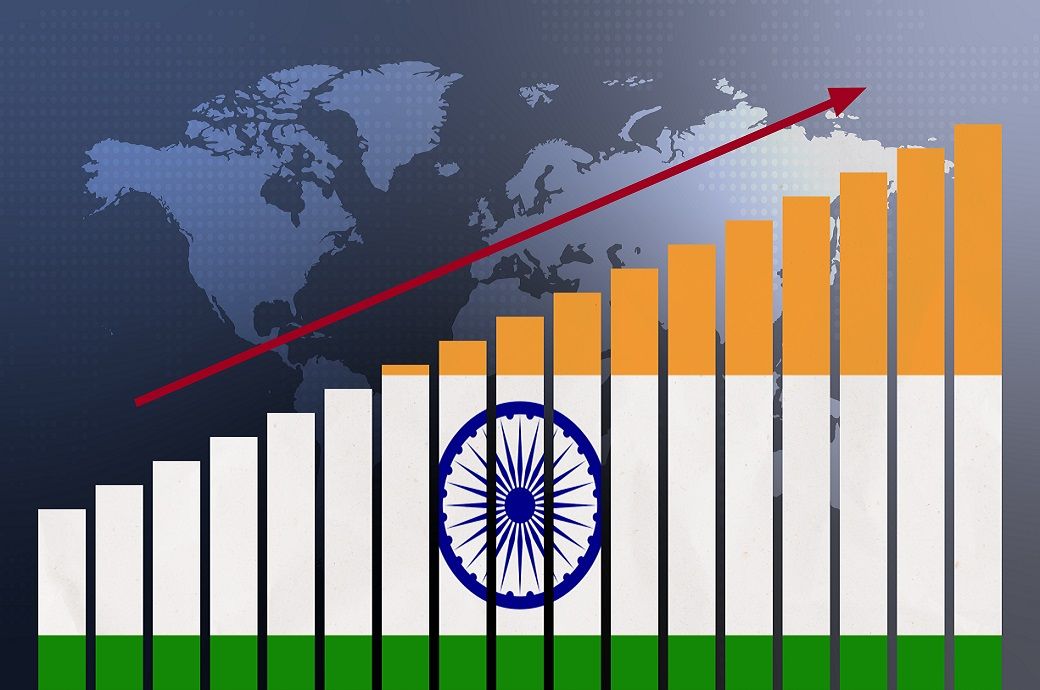
Under the baseline assumption of prolonged 50-per cent US tariffs, India’s real gross domestic product (GDP) is projected to grow at 6.6 per cent in fiscal 2025-26 (FY26) before moderating to 6.2 per cent in FY27, the IMF said.
The reform of the goods and services tax (GST) and the resulting reduction in the effective rate are expected to help cushion the adverse impact of tariffs.
Despite external headwinds, India’s growth is expected to be robust, backed by favourable domestic conditions, the IMF has said.
Assuming prolonged 50-per cent US tariffs, FY26 real GDP may grow at 6.6 per cent before moderating to 6.2 per cent in FY27.
Further deepening of geo-economic fragmentation could lead to tighter financial conditions, higher input costs and lower trade, FDI and economic growth.
Headline inflation is projected to remain well contained, reflecting the one-off effect of the GST reform and continued benign food prices, it remarked in a release.
Looking ahead, India’s ambition to become an advanced economy can be supported by advancing comprehensive structural reforms that enable higher potential growth, the IMF noted.
There are significant near-term risks to the economic outlook. On the upside, the conclusion of new trade agreements and faster implementation of structural reform domestically could boost exports, private investment and employment.
On the downside, further deepening of geo-economic fragmentation could lead to tighter financial conditions, higher input costs and lower trade, foreign direct investment (FDI) and economic growth.
Unpredictable weather shocks could affect crop yields, adversely impact rural consumption and reignite inflationary pressures, the IMF added.
Fibre2Fashion News Desk (DS)
-

 Sports7 days ago
Sports7 days agoWATCH: Ronaldo scores spectacular bicycle kick
-

 Entertainment7 days ago
Entertainment7 days agoWelcome to Derry’ episode 5 delivers shocking twist
-

 Politics7 days ago
Politics7 days agoWashington and Kyiv Stress Any Peace Deal Must Fully Respect Ukraine’s Sovereignty
-

 Business7 days ago
Business7 days agoKey economic data and trends that will shape Rachel Reeves’ Budget
-

 Tech5 days ago
Tech5 days agoWake Up—the Best Black Friday Mattress Sales Are Here
-

 Fashion7 days ago
Fashion7 days agoCanada’s Lululemon unveils team Canada kit for Milano Cortina 2026
-

 Tech5 days ago
Tech5 days agoThe Alienware Aurora Gaming Desktop Punches Above Its Weight
-

 Politics7 days ago
Politics7 days ago53,000 Sikhs vote in Ottawa Khalistan Referendum amid Carney-Modi trade talks scrutiny


